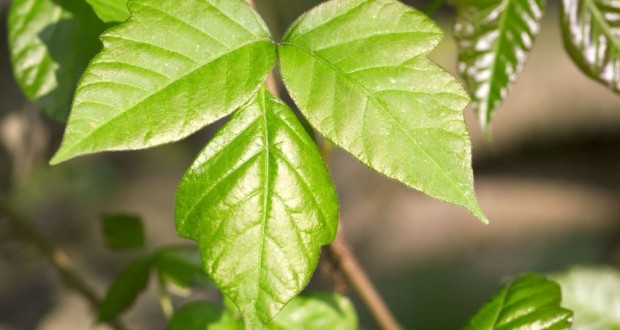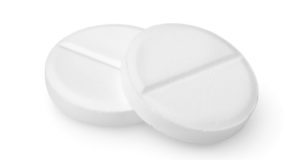Enjoying the great outdoors is an amazing, exhilarating experience – unless you accidentally stumble into a patch of poison ivy. Poison ivy, while usually not a serious threat to your long-term health, has certainly earned its reputation as a potent outdoor skin irritant. If you’re unlucky enough to brush up against this bothersome plant while getting some fresh air, you might benefit from some old-fashioned household remedies. Please note that you should see a doctor if you have a more severe case of poison ivy.
Plant Characteristics
Poison ivy plants can be distinguished by their three leaflets, with the middle leaf being bigger than the leaves on its left and right. This trait gave rise to the saying “leaves of three, let them be.” These leaves can vary widely in size, ranging from 8mm to 55mm (or .31 inch to 2.16 inches).
When the plant first grows in the spring, its leaves display a reddish color, which turns green in the summer. As summer turns into fall, the leaves change from green into various shades of red, yellow or orange. Poison Ivy can grow along the ground, in a bush-like form and up along trees.
The best place for poison ivy to grow is along fields; it can’t get enough sunlight deep among lots of trees and it gets overpowered by grass plants in open fields. Poison ivy can be found throughout the US, except along a large slice of the west coast. It is also prevalent in southern Canada.
Symptoms
A person typically contracts poison ivy-related symptoms by either touching the plant directly or by coming into contact with something that has touched it; this includes people, pets and clothes. The first symptom you will see is an itchy spot, which will proceed to grow larger and more irritating. This rash will likely itch more than anything you have previously experienced. The area affected by the rash may remain small, or it could cover large amounts of your body. In addition, poison ivy has staying power – a rash can last from 1 to 3 weeks.
Stopping Poison Ivy Before it Starts
Below are some guidelines that can mitigate the effects of poison ivy.
Hands Off – As with mosquito bites, scratching poison ivy might give you temporary relief, but it will make things worse in the no-so-long run. Scratching an afflicted area shortly after initial contact will get the ivy on your hands, which can easily spread the ivy to anything it touches
Cover Vulnerable Areas – Walking around in shorts, t-shirts and sandals puts you at greater risk of getting poison ivy. If it’s not too hot outside, opt for boots or sneakers, pants and long-sleeve shirts.
Rinse Contaminated Clothes Outside – Just because you’re wearing protective clothing doesn’t mean you’ve fully escaped the grasp of poison ivy – it will simply get on your clothes instead. Fortunately, water will wipe out poison ivy off all of your clothing, so make sure to give any contaminated clothing a good dosing as soon as possible. In order to prevent spreading poison ivy onto things in your house, it’s best to rinse your clothes outside before you head in.
Get Wet – Fast! – Water can not only remove poison ivy from your clothes, but it can also disarm poison ivy that has gotten on your skin. Unfortunately, this is only true for about five to ten minutes after initial contact. A garden house will work, but if you’re in a pinch, you can use a lake or stream.
Make Good Use of Rubbing Alcohol – If it’s too late to simply wash off the poison ivy, you might have better luck with rubbing alcohol. The poison ivy sinks into your skin gradually, giving you some time to head it off at the pass by using rubbing alcohol on the afflicted area. After you have thoroughly washed the area with rubbing alcohol, rinse it off with water. Don’t wipe the impacted area with a cloth, as this may spread the ivy, and try to keep the rubbing alcohol away from your eyes. You should have no problem carrying around a small container of rubbing alcohol with you on your next outdoor adventure.
Use a Protectant – It may be a good idea to put on a poison ivy protectant before you head outside. These proctectants usually are usually sold as creams, and are applied to areas that might be at risk for getting poison ivy.
Home Remedies
If you’ve failed to prevent poison ivy, you might consider giving these natural remedies a try:
- Take a Cold Shower/Bath – You may not like the idea of a cold shower or bath under normal conditions, but you may warm up to the idea (pardon the pun) if you’re dealing with a nasty poison ivy rash.
- Make a Baking Soda/Water Paste – Simply mix together baking soda and water until it forms a paste, and apply it to the affected area. Apply the paste every two hours until you have applied it for a total of three times. Up for a baking soda bath? Pour a cup of baking soda into the tub of lukewarm water, and take a bath right before heading to bed.
- Use Soap and Water – As mentioned earlier, washing with water is only effective for about five to ten minutes after you come into contact with the poison ivy. After rinsing the area with water, apply soap to the afflicted area. If you used any towels or cloths to dry yourself, make sure to immediately wash them in hot water and detergent.
- Grab the Calamine Lotion – You’ve probably used this product in the past to treat mosquito bites. Calamine location can also relieve the symptoms of poison ivy. Apply the lotion in a thin layer so as not to seal any skin pores.
- Try Burrows’ Solution – This over-the-counter medication is sold in both tablet form and as a powder that is mixed with water. It is often sold under the name Domeboro.
- Opt for an Hydrocortisone Creams – Some of these creams are sold over-the-counter, while others require a prescription. Be advised that these creams are not especially effective against stronger cases of poison ivy rash.
Poison ivy can certainly make your life miserable if you happen to – literally – bump into it. Fortunately, by taking several precautionary steps, you can minimize your chances of getting a nasty poison ivy rash. In addition, there are a number of treatment methods you can use to help you recover from an encounter with this pesky plant. By making good use of these suggestions, you can better enjoy all the things nature has to offer.
 Natural Knowledge 24/7 Educate yourself with nutrition, health and fitness knowledge.
Natural Knowledge 24/7 Educate yourself with nutrition, health and fitness knowledge.






